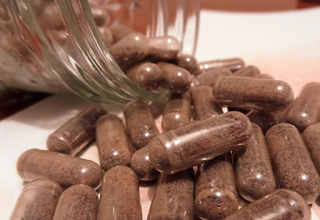Yes, I said it. Ingest your placenta.
Now, you may be thinking, “ew, that’s gross!”, or even “what on earth is a placenta!?”. Well, luckily, I can answer that question, and hopefully change your mind on the ‘gross’ part.
The placenta is the organ that attaches to the wall of the uterus and is connected to your baby via the umbilical cord. All nutrients for your baby pass through the placenta, as well as oxygen and hormones. The placenta is often called the ‘tree of life’, both for its life-sustaining properties and the tree-like vein patterns that course through it.
Your placenta contains a variety of ingredients: your own natural hormones, vitamins, minerals, protein, iron, etc. By re-introducing small amounts of your placenta back into your body over a gradual period, you help to combat the sudden hormonal shift that happens after childbirth.
Some benefits of ingesting your placenta are
It is perfectly made for YOU
It helps to balance your system
It replenishes depleted iron
It gives you more energy
It can lessen postnatal bleeding, both immediately after birth and for the month that follows
It has been shown to increase breastmilk production
It helps the uterus return to its pre-pregnancy state more quickly
It can be helpful during menopause
It can help you reduce depression and negative feelings in the postnatal time
It can decrease the likelihood of postnatal insomnia
Your placenta is tailor made for you, and women around the globe have been ingesting placenta for generations. It can be taken in capsule form, raw, cooked, grilled, blended… you name it. Capsules are the most popular modern option for placenta ingestion, and are taken much like a vitamin. In some cultures, women take bites of the raw placenta immediately following birth in order to prevent postpartum hemorrhage and to help the uterus contract back down, and then the rest of the placenta is saved to be consumed later.
Of course, before attempting to do ANYTHING with your placenta, it is important to verify that you and your placenta are in good health. Asking your caregiver immediately following the birth if your placenta is healthy is the first step. If you are delivering in a hospital setting, there may be paperwork to fill out before your placenta is released into your care or the care of your Placenta Specialist.
For more information on the benefits of ingesting your placenta, visit PlacentaBenefits.info.



No comments:
Post a Comment